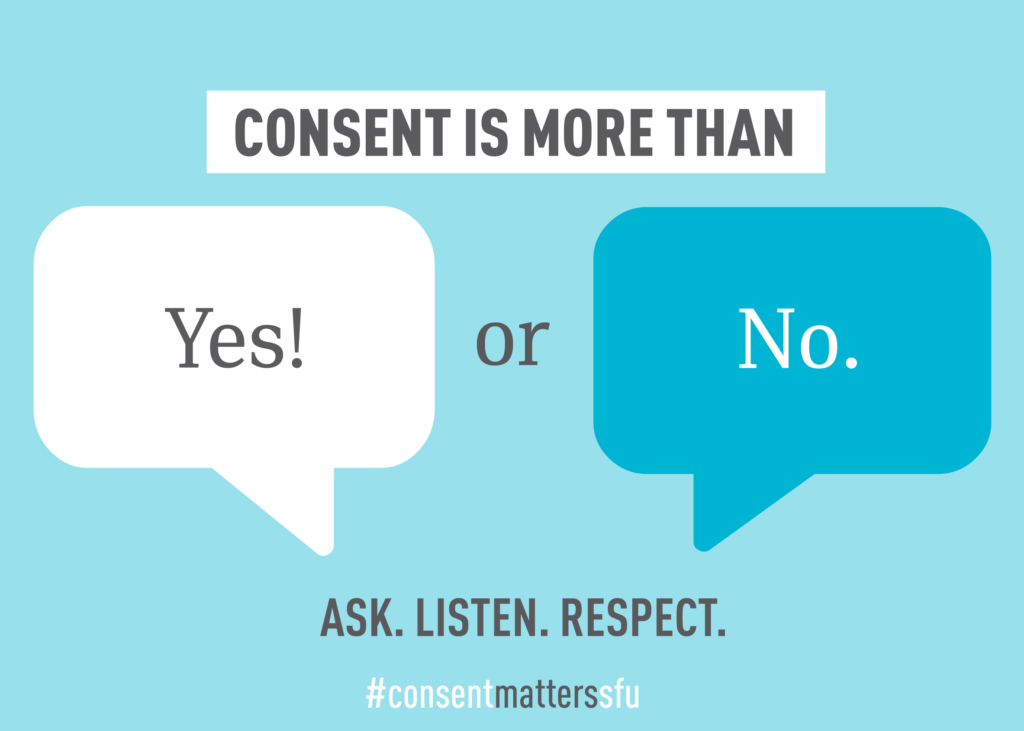Consent

When you are about to engage in or are engaging in any sexual activity, it’s important to receive consent from the person/people you’re with, and it’s important to feel safe and comfortable when you’re giving consent. Here are some reminders when giving and receiving consent:
- Your body is yours and yours alone. You are the only person who can decide what to do with it. If someone wants to do something to your body, they must first receive permission, or consent, from you. Likewise, if you want to do something to someone else’s body, you must first get their consent.
- Consent must be communicated clearly and verbally. Implied consent, or when you “think” someone might be giving their consent from non-verbal cues such as body language and behavior, can be tricky to read and easily misinterpreted.
- Yes means yes, and anything other than yes means no. Saying yes should be easy and fun when you know what you want to do and you don’t feel pressured by your partner.
- Consent applies on a moment-to-moment basis. Just because you consented to something last night does not mean you have consented to doing the same thing tonight. At any point during a sexual activity, you have the right to withdraw your consent and stop.
- If you’re substantially impaired from drug or alcohol consumption or physically incapable of communicating (e.g., asleep, unconscious), you cannot consent to any sexual activity and whoever you’re with should not take advantage of that.
- Your partner(s) should respect you in all situations. It’s not only when you first give consent, but every moment after as well. If you don’t feel comfortable or safe at any time and you want to stop, your partner should respect that and not pressure or guilt you.
- If you do not or cannot consent to a sexual activity and the other person does it anyway, that is called sexual assault. If you experienced sexual assault, remember it was not your fault. Consider telling a trusted adult and visit the Violence and Abuse page for local resources or this page from Planned Parenthood to review your options.
Let’s check out some analogies about consent. The first example is a 2016 Twitter thread from @thatxxv that compares consent to lending a $5 bill.

In this video from the University of Hawai‘i West O‘ahu, consent is compared to eating a loco moco.
For more information on consent, visit these pages from Love is Respect and the Rape, Abuse & Incest National Network (RAINN).
Content reviewed by Shandhini Raidoo, MD, MPH, FACOG
Last Updated: September 25, 2020 by Phyllis Raquinio
Sources
Consent is More Than Photo: Consent. (n.d.). Retrieved July 21, 2020, from https://www.sfu.ca/sexual-violence/education-prevention/what-is-consent.html